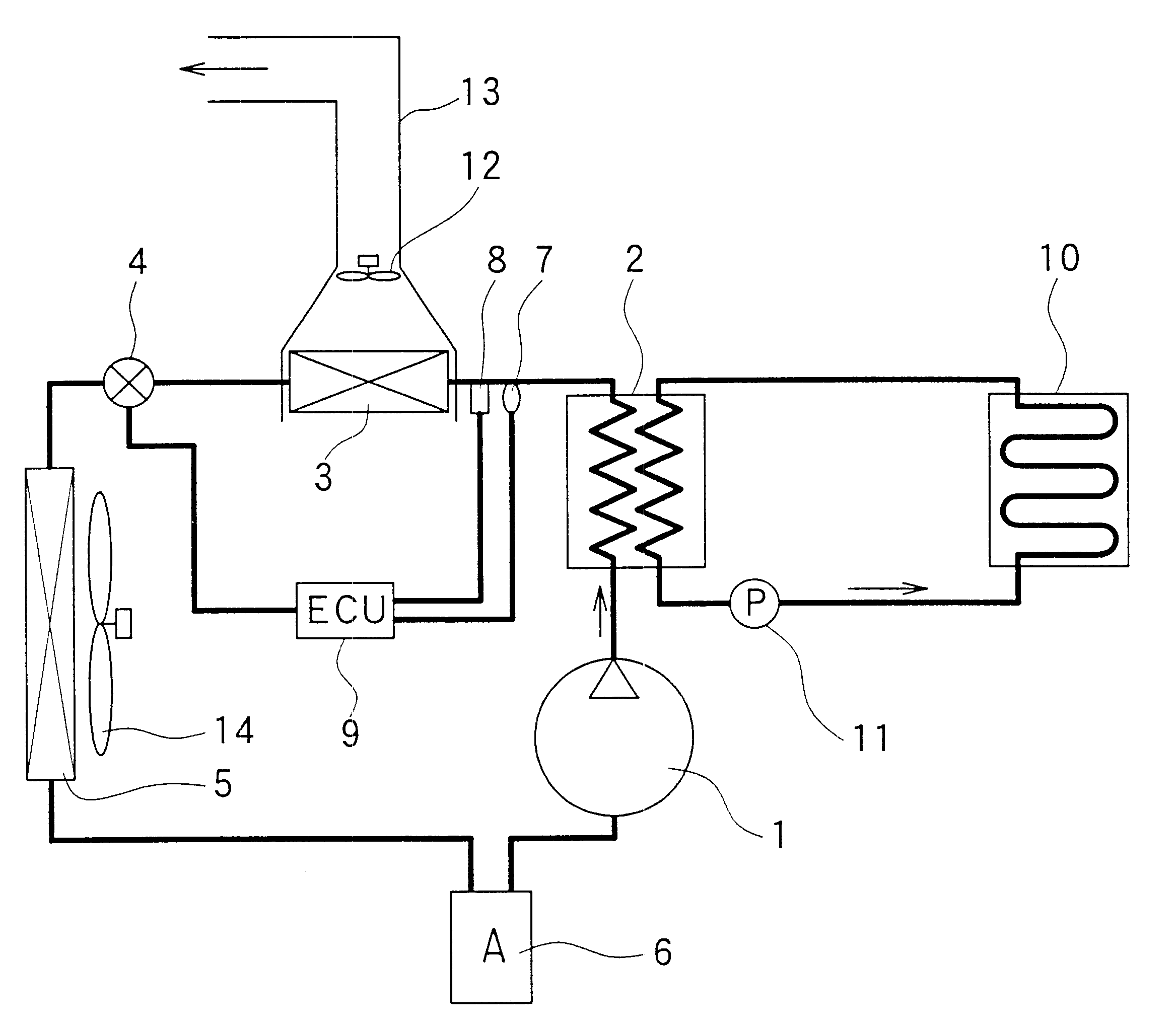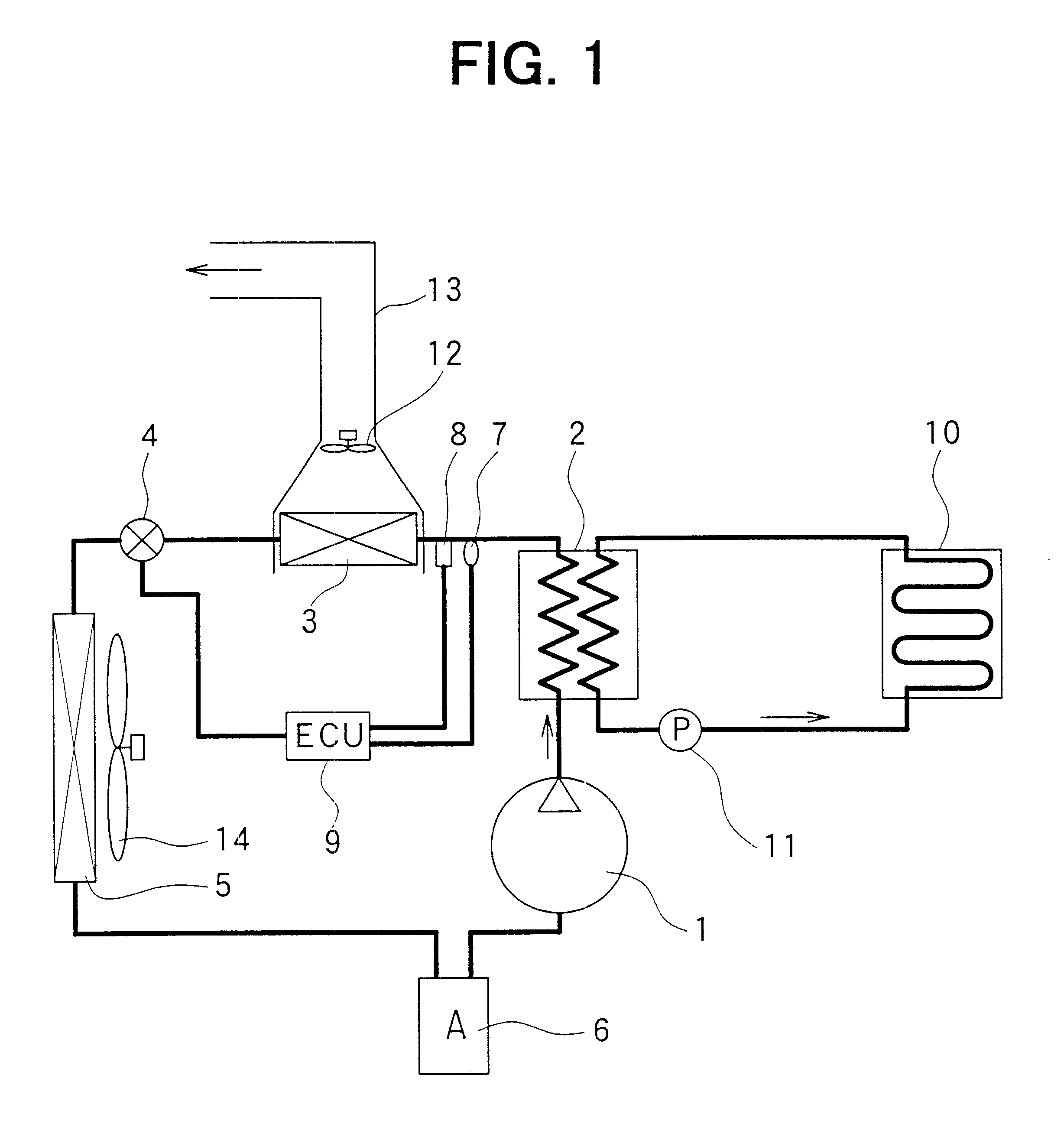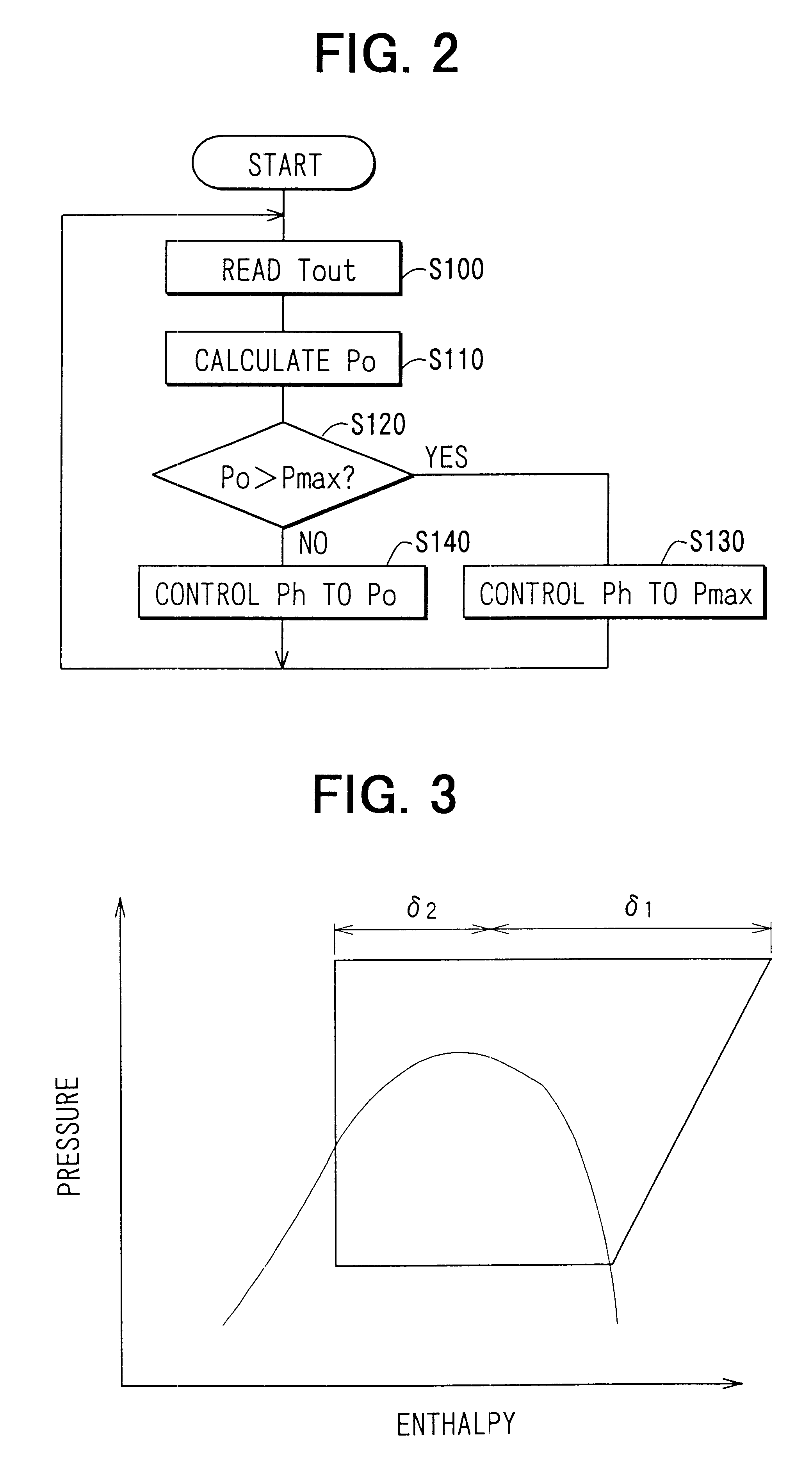Heat pump cycle
a heat pump and cycle technology, applied in the direction of heat pumps, lighting and heating equipment, electrochemical generators, etc., can solve the problems of unnecessarily increasing power consumption of compressors, reducing the heat quantity (enthalpy) to be extracted from heat pumps, and deteriorating the coefficient of performance of heat pumps
- Summary
- Abstract
- Description
- Claims
- Application Information
AI Technical Summary
Benefits of technology
Problems solved by technology
Method used
Image
Examples
first preferred embodiment
(First Preferred Embodiment)
In the first preferred embodiment, a heat pump cycle of the present invention is typically applied to a heating device used for a home. FIG. 1 is a schematic diagram showing a heating device used for the home in accordance with the first embodiment. In the heat pump cycle of FIG. 1, a compressor 1 sucks a refrigerant (e.g., carbon dioxide in the present preferred embodiment) and compresses the refrigerant to a pressure not less than the super-critical pressure of the refrigerant. A first high-pressure side heat exchanger 2 is disposed to perform a heat exchange between a high pressure refrigerant discharged from the compressor 1 and hot water supplied for heating a floor (hereinafter referred to as hot water).
A second high-pressure side heat exchanger (supplementary heat exchanger) 3 is disposed to perform a heat exchange between the high pressure refrigerant flowing out from the first high-pressure side heat exchanger 2 and air blown into a bathroom (not...
second preferred embodiment
(Second Preferred Embodiment)
In the above-described first embodiment, the permissible maximum pressure Pmax is fixed at a specific value. However, in the second embodiment, the permissible maximum pressure Pmax is changed based on outside air temperature. The permissible maximum pressure Pmax also can be changed based on the refrigerant pressure (evaporation pressure) in the low-pressure side heat exchanger 5 or the refrigerant temperature (evaporation temperature) in the low-pressure side heat exchanger 5. Here, the permissible maximum pressure Pmax can be set to become higher in accordance with an increase of the evaporation pressure or the evaporation temperature in the low-pressure side heat exchanger 5.
That is, the temperature of refrigerant discharged from the compressor 1 is determined by the discharge pressure (high-pressure side refrigerant pressure) of refrigerant discharged from the compressor 1 and the refrigerant temperature (i.e., evaporation temperature) sucked into t...
third preferred embodiment
(Third Preferred Embodiment)
In the third embodiment, the heat pump in accordance with the present invention is used for heating in a vehicle heater and in a fuel cell (FC stack). FIG. 7 is a schematic diagram of a heat pump cycle in accordance with the third embodiment. Hereinafter, the points different with the above-described first and second preferred embodiments will be now described.
In FIG. 7, there are provided fuel cells (FC stack) 20 for generating electricity by chemically reacting hydrogen with oxygen, and first and second pumps 21, 22 for circulating hot water (cooling water).
The cooling water for cooling the FC stack 20 flows from the FC stack 20, and is cooled by a radiator 23. Further, a bypass circuit 24, through which the cooling water flowing out from the FC stack 20 bypasses the radiator 23 and return to the FC stack 20, is provided. The quantity of the cooling water passing through the radiator 23 and the quantity of the cooling water passing through the bypass ci...
PUM
| Property | Measurement | Unit |
|---|---|---|
| density | aaaaa | aaaaa |
| heat resistance temperature | aaaaa | aaaaa |
| temperature | aaaaa | aaaaa |
Abstract
Description
Claims
Application Information
 Login to View More
Login to View More - R&D
- Intellectual Property
- Life Sciences
- Materials
- Tech Scout
- Unparalleled Data Quality
- Higher Quality Content
- 60% Fewer Hallucinations
Browse by: Latest US Patents, China's latest patents, Technical Efficacy Thesaurus, Application Domain, Technology Topic, Popular Technical Reports.
© 2025 PatSnap. All rights reserved.Legal|Privacy policy|Modern Slavery Act Transparency Statement|Sitemap|About US| Contact US: help@patsnap.com



